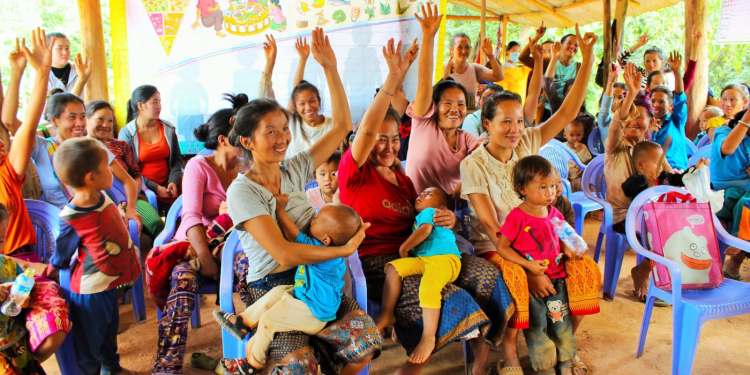This article was produced in partnership with CGIAR’s Platform for Big Data in Agriculture. Catch up with all the sessions from the Platform’s 2020 Convention here.
Despite the utopian promise of “human fuel” meal replacement powders, every human still needs real food, grown on real farms. The importance of agriculture should guarantee its place at the forefront of technological innovation, yet digitalization is taking its time to reach fields and farms.
“Somehow there is a missing link in getting data sets to make sense to the policymaking processes,” said Sara Mbago-Bhunu, director of the East and Southern Africa Division at the International Fund for Agricutltural Development. “There is a very deep analytical gap.”
Mbago-Bhunu was speaking at the CGIAR Platform for Big Data in Agriculture virtual convention that took place 21–23 October on computer screens all over the world.
While she acknowledges the contributions of GIS-type mapping and national agriculture investment programs, Mbago-Bhunu is not alone in seeing fragmented research divorced from practical application.
Ana Castillo Leska, senior specialist at the Inter-American Development Bank, agreed: “At least in Latin America, we don’t see agricultural research transform into solutions that are user friendly for farmers.”
Growing a digital strategy
The agricultural sector is crying out for digital leadership. Michiko Katagami, agriculture economist at the Asian Development Bank, said: “Governments, the private sector and farmers – everybody feels the potential of doing something extraordinary with technology, yet we still do not have an institutional strategy on how.”
CGIAR, the world’s largest agricultural research and development organization – comprising no fewer than fifteen research centers and supporting more than 8,000 scientists, researchers, technicians and staff – has sought to develop a solution for this with its Platform for Big Data in Agriculture, a research support platform whose remit is to demolish the roadblocks holding back digitalization in agriculture.

“The Platform for Big Data in Agriculture serves as a digital practice cutting across all of the centers of the CGIAR organization,” said Brian King, the Platform’s coordinator. “We are talking about data that is discoverable, well-described, usable and reusable across domains so that we can solve increasingly complex problems in global food security.”
Artificial Agricultural Intelligence?
King is particularly excited about the potential of artificial intelligence (AI), a broad term that encompasses everything from robotics to machine learning.
“Artificial intelligence could well be as transformational as combustion engines or electricity,” King said. “As we see the rapid global digitization of economy and society, artificial intelligence provides us with tools make sense of all preceding data.”
At the Asian Development Bank, Michiko Katagami helps fund AI in agriculture. Her favorite success story is an app developed by one of the CGIAR Research Centers and Microsoft that used historic climate data to advise peanut farmers in India on when to sow their seeds.
“The peanut farmers didn’t change anything but the sowing date of the peanuts and their yield increased by 30 percent,” Katagami said. “We were sort of devastated: wow, machine learning can do this – what have we been doing for the past 20 years?!”
So what’s stopping us?
One of the roadblocks facing CGIAR is that commercial banks and insurance firms have great difficulty reaching the smallholders who make up the vast majority of the world’s agriculturalists.
“One of our main concerns is inclusion,” said Leska in regards to Latin America and the Caribbean in particular. “16.6 million families in the region represent 80 percent of the farmers and they are very small farms.”
Brian King is in no doubt. “There is a huge untapped opportunity in terms of reaching small businesses and farmers,” he said. “There is also a recognition that using purely commercial financing to reach smallholder farmers is really difficult, if not impossible.”

These parallel tracks suggest a natural entry point for a global, non-profit institution like CGIAR. “We can mitigate some of the risks of those digital services,” King suggested, “and we can create some of the data and analytic assets that support those services.”
The Platform for Big Data in Agriculture is one way CGIAR can support agricultural digitalization, but the organization is also working to inspire the future more directly.
Inspiring the future
“Our Inspire module provides challenge funding for great ideas that are going to solve development problems faster and more efficiently,” said Andy Jarvis, environmental scientist at the International Center for Tropical Agriculture and cheerleader-in-chief for the Platform for Big Data in Agriculture Inspire Challenge.
Every year, the Inspire Challenge awards USD 100,000 to innovative, scaleable technologies. In 2020, the winners included an AI-driven agricultural advisory hotline, a citizen science diet diversity app, a project to gamify real-time photo data collection, a global data platform for the world’s rangelands and an early warning system to help protect African farmers from epic swamps of locusts.
Another Inspire Challenge winner was a smartphone app called N-Allyzer, which offers tailored scientific advice on the precise amount of nitrogen fertilizer a farmer should use on each specific field crop – and it analyzes this information from a single photograph.
Listening to plants
“We must listen to what the plants say,” said N-Allyzer computer scientist Willingthon Pavan, “and consider the interaction among all nutritional elements in order to apply fertilizer in such a way that gives plants just what they need, provides a profitable return to farmers, and takes care of the environment.”
Science-based, accessible, profitable and ecologically sound, N-Allyzer perfectly encapsulates the ambition of CGIAR digital strategy.
“We like this mission-driven digital innovation approach,” Brian King said, “where we are continually building our own capacity, and sourcing and fostering interventions that help realize the Sustainable Development Goals.”
With such leadership, CGIAR can genuinely hope to deliver on the potential of technology in agriculture, and, in so doing, help farmers feed the world.








